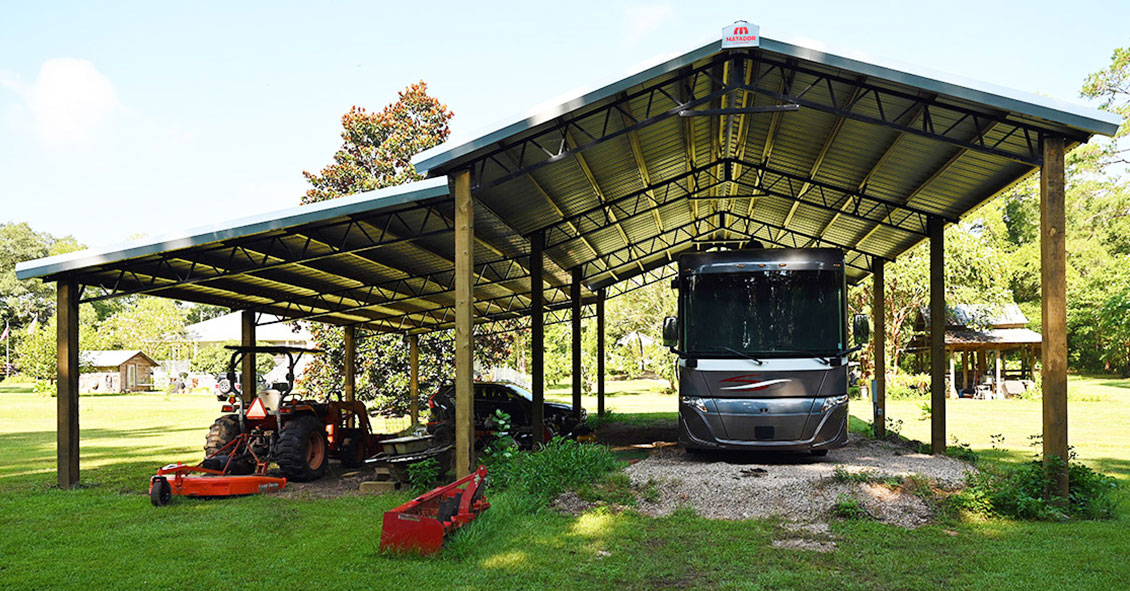What You Need to Know Before Building a Pole Barn: The Essential Guide
August 12, 2023

Building a pole barn offers several advantages that make it an attractive choice for many individuals and businesses. One of the main reasons someone might choose a pole barn is its simplicity and, as a result, its cost-effectiveness.
The basics of a pole barn are rudimentary. In essence, a pole barn is a simple, adaptable, and cost-effective type of building, often used for agricultural or storage purposes. The strength of these structures comes from poles (hence the name) that are buried deep into the ground, providing support for a protective roof.
Constructing a pole barn is often more affordable compared to traditional building methods. The materials used, such as wooden posts and metal roofing, are generally less expensive, and the construction process is quicker, which reduces labor costs. This makes pole barns a practical option for those looking to maximize their budget.
When it comes to construction, they rely on vertical poles as the primary support system, making extensive foundation work often unnecessary. This significantly reduces construction time, allowing for faster completion of the project.
The Flexibility of Pole Barns
The spacious interior of a pole barn provides ample storage space, making it ideal for housing agricultural equipment, machinery, vehicles, or other items that require a large area. Without interior support walls, the available space can be fully used, optimizing storage efficiency. They can be constructed to serve as the basis for post-frame construction of other buildings like homes.
Pole Barns: Pre-Construction Considerations
The old adage about “location, location, location” being the top three considerations for real estate also rings true with pole barns. Site selection is as important for your pole barn as it is for any real estate investment. Consider factors like ground slope, soil type, and accessibility to ensure your pole barn stands the test of time.
Related to location are the zoning laws and building permits that you’ll need for whatever location you choose. So, before you start making building plans, it's crucial to understand the local zoning laws and find out what building permits are required in your area. This will help you avoid any legal hurdles down the road.
Designing Your Pole Barn
When designing a pole barn, several key considerations are essential to ensure its functionality and longevity.
1. Size and Layout
The size and layout of your pole barn should reflect its intended use. Whether you're planning to store a lot of heavy machinery or create a shaded area for livestock, you must design with purpose.
Matador offers pole barns in a wide variety of sizes, in widths of 12’, 20’, 24’, 30’, 36’, 40’, 50’, and 60’ and lengths of 20’ to 300’, making customization for your needs easy.
2. Material Selection
Pole barns should be designed to be durable. Pressure-treated wood for the posts helps protect against decay and insect damage, and metal roofs and trusses provide resistance to weather elements. This ensures that a pole barn will withstand the test of time and continue to serve its purpose for years to come.
Choose materials with longevity, cost, and aesthetics in mind. At Matador, our pole barns have metal roofs, red iron purlins, and black-angle iron trusses, and the posts are strong pressure-treated rough-cut lumber. (8” x 8” or 10” x 10”) We call them “your forever pole barn” because it will be the last pole barn you ever purchase until you purchase an additional one!
Constructing and Maintaining Your Pole Barn
A solid foundation and framing are crucial to your pole barn’s longevity and to ensure the barn's structural integrity. Think about it. If cattle or other livestock will come into contact with your pole barn, what happens when they rub against it? (They’ve got to scratch that itch somehow!) Equally important, the roof is there to provide the elementary weather protection offered by a pole barn. We don’t skimp on the elements. Our customers consistently tell us the poles on their pole barns are made to last. That’s no accident.
Maintenance on a pole barn is also pretty simple. If you inspect a pole barn once a year, you’ll likely find there’s not much to maintain to keep it in top shape.
Long-term Improvements
Another great benefit of a basic pole barn is that with its post-frame construction, as your needs change over time, your pole barn can change too. If you decide you need to add to the length of the barn, that can be done, and lean-tos can be added to one side or both. A pole barn can be modified to add walls, doors, windows, and other building elements. If you find later that you’d rather have a garage, you can finish it out and do just that. This adaptability ensures that the structure can continue to evolve along with the demands of the owner.
To get started with a pole barn on your property, start a conversation with one of our pole barn experts. They can go over the specs for your project and get you started in the right direction.










